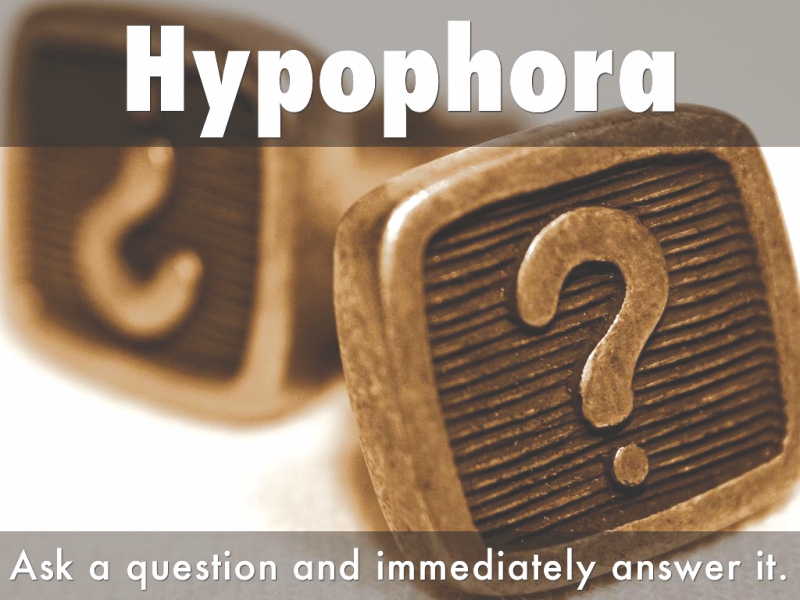Hypophora is a figure of speech in which a speaker/writer raises a question and immediately provides an answer – Roopa Banerjee

Ask yourself a question and answer it yourself. Does that sound weird? It shouldn’t, as it is a popular literary device used by writers and speakers. Hypophora is a figure of speech in which a speaker writer raises a question and immediately provides an answer. The etymology of hypophora is from the Greek word ipofora, meaning ‘carrying under’ or ‘putting under’.
In literature, hypophora has been liberally used by many authors. For instance children’s author E.B. White (1899-1995) in his best-selling novel Charlotte’s Web writes: “After all, what’s a life, anyway? We’re born, we live a little while, we die. A spider’s life can’t help being something of a mess, with all this trapping and eating flies. By helping you, perhaps I was trying to lift up my life a trifle. Heaven knows anyone’s life can stand a little of that.”
British prime minister Winston Churchill famously made use of hypophora in a speech delivered during World War II (June 4, 1940): “You ask, what is our policy? I will say: It is to wage war, by sea, land, and air, with all our might and with all the strength.”
The advantage of using hypophora in political speeches and literary works is that it engages audiences and readers by simulating probable conversations with them.
In actual form, hypophora is the question and anthyphophora the answer. However, over time, hypophora has become the common usage term for both the question and answer.
Many people tend to confuse hypophora with rhetorical questions. The difference between the two is that hypophora requires the writer/speaker to provide an answer, whereas the rhetorical question does not.
Hypophora is also employed to initiate new debates on topics of importance about which addressees might not have sufficient information. In addition, it can be applied as a directional device to veer the audience’s attention to relevant topics.
Films and movies also use hypophora liberally. An example:
“And how’d you get that (becoming King), eh? By exploiting the workers! By hanging on to outdated imperialist dogma which perpetuates the economic and social differences in our society.”
— Monty Python, Monty Python and the Holy Grail (1975)
Hypophora has also been used to great advantage in advertising. Planting a thought in the mind of readers and then answering it in a way that leads them to think about their product is invaluable for advertisers. Old Spice advertisements use several hypophora: “Does your man look like me? No. Can he smell like me? Yes. Should he use Old Spice body wash? I don’t know. Do you like the smell of adventure? Do you want a man who smells like he can bake you a gourmet cake in the dream kitchen he built for you with his own hands? Of course, you do.”
Exercise
Identify the literary works from which the following hypophoras are excerpted:
1. “Who knows? And what does it mean — you’ll die? Perhaps a man has a hundred senses, and when he dies only the five known to us are destroyed and the remaining ninety-five are left alive …”
2. “This one is enough for you? (Silence.) It’s not nice of you, Didi. Who am I to tell my private nightmares to if I can’t tell them to you …?”
Answers:
1. Cherry Orchard by Anton Chekov
2. Waiting for Godot by Samuel Beckett

























